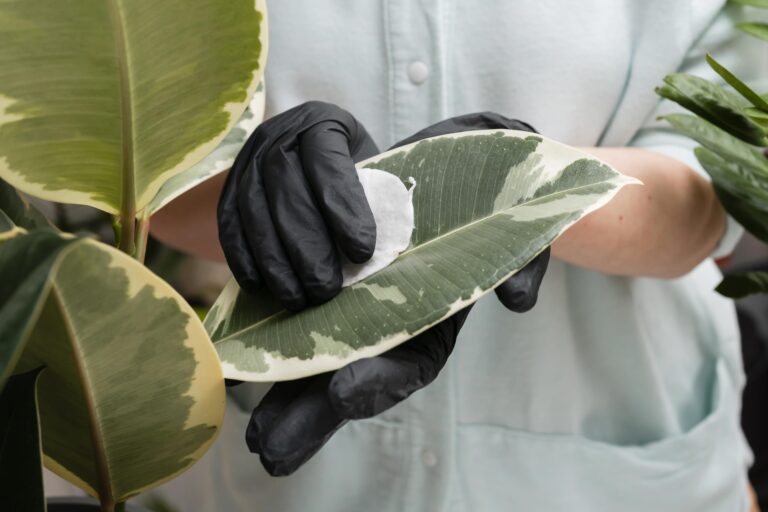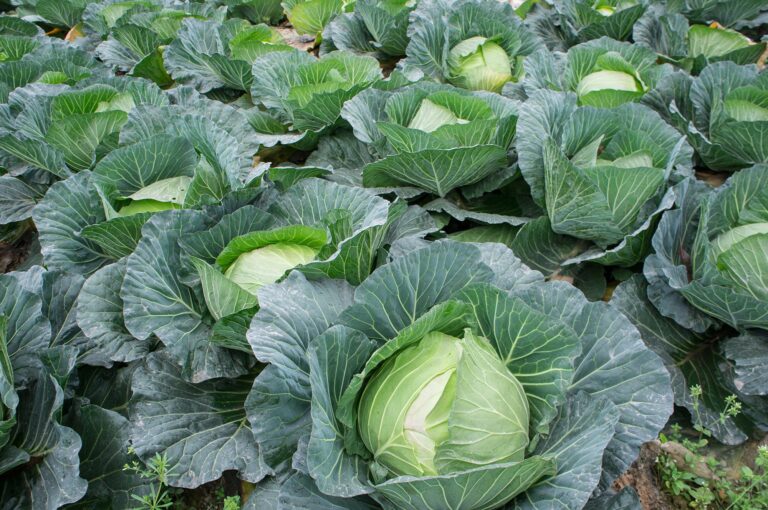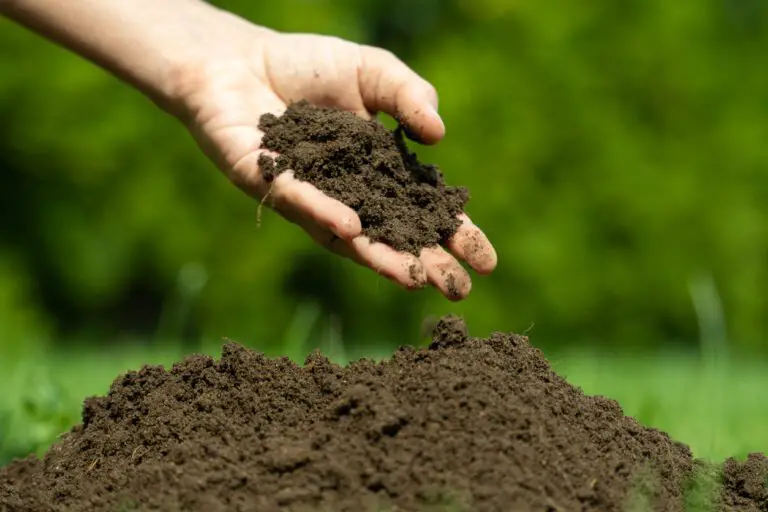Tackling Clubroot: Super Preventing Brassica Root Disease
Table of Contents
Understanding Clubroot and its Impact on Brassica Crops
Clubroot, caused by the soil-borne pathogen Plasmodiophora brassicae, is a serious disease that affects Brassica crops worldwide. This pathogen forms galls on the roots of plants, leading to swelling and deformation, ultimately impeding the plant’s ability to uptake water and nutrients. The impact of clubroot can be devastating, causing stunted growth, wilting, and yellowing of leaves, thus significantly reducing crop yield and quality. Brassica crops such as cabbage, broccoli, and cauliflower are particularly susceptible to this disease, making it a significant concern for farmers and gardeners alike.
Apart from the visible symptoms, clubroot can persist in the soil for several years, posing a long-term challenge for crop production. The disease can spread through contaminated soil, equipment, and plant debris, making it essential for growers to adopt proactive measures to prevent its occurrence and spread. Understanding the lifecycle and mechanisms of clubroot is crucial in developing effective management strategies to safeguard Brassica crops from this destructive pathogen.

Identifying Early Signs and Symptoms of Clubroot
Clubroot, caused by the Plasmodiophora brassicae pathogen, is a serious disease that can devastate brassica crops such as cabbage, broccoli, and cauliflower. Early detection is crucial in mitigating the spread of clubroot within a garden or field. One of the earliest signs of clubroot infection is the formation of small galls or swellings on the roots of affected plants. These galls can impede the plant’s ability to uptake water and nutrients, leading to stunted growth and wilting. Additionally, infected plants may exhibit yellowing or chlorosis of the leaves, as the pathogen disrupts the plant’s normal physiological processes.
As clubroot progresses, affected plants may show increased susceptibility to drought stress and exhibit a general decline in vigor. The characteristic club-like swellings on the roots may become more pronounced, causing distortion and malformation of the root system. It is important for gardeners and farmers to monitor their brassica crops regularly for any signs of clubroot, especially in areas with a history of the disease. Early identification can help in implementing preventive measures to protect the rest of the crop and prevent further spread of the pathogen.

Exploring the Causes of Clubroot in Brassica Plants
Clubroot in Brassica plants is primarily caused by the soil-borne pathogen Plasmodiophora brassicae. This microorganism infects the roots of Brassica crops, leading to the formation of characteristic galls or club-like swellings. The pathogen’s spores can persist in the soil for many years, making it challenging to eradicate once established. Factors such as high soil moisture, acidic pH levels, and poor soil drainage create favorable conditions for clubroot development, emphasizing the importance of proper soil management practices.
Additionally, the introduction of infected plant material or contaminated soil can also contribute to the spread of clubroot within a growing area. As the pathogen can be carried on tools, footwear, or even on the wind, implementing strict sanitation measures becomes crucial in preventing its dispersal. Proper crop rotation, avoiding planting susceptible crops in the same area repeatedly, and cleaning equipment thoroughly after each use are essential steps in reducing the risk of clubroot establishment and spread.
The table below shows the causes of clubroot in brassica plants:
| Cause | Description |
| Pathogen | Clubroot is caused by the soil-borne pathogen Plasmodiophora brassicae. This micro-organism infects susceptible brassica plants through their root hairs. |
| Infection Process | The pathogen produces cysts (zoospores) that remain in the soil until a suitable host (such as brassicas) is available. It then infects the roots, leading to massive swelling, distortion, and severely retarded growth. |
| Affected Plants | Vegetable brassicas (e.g., Brussels sprouts, cabbages, cauliflowers, turnips, swedes, and radishes) as well as ornamental relatives (e.g., wallflowers, stocks, aubretia) and cabbage-family weeds (e.g., shepherd’s purse) can be affected. |
| Timing | Most new infections occur from mid-summer until late autumn when the soil is moist and warm. |
| Control Measures | Non-chemical control: Buy brassica plants from a guaranteed clubroot-free source. Grow plants in healthy soil before planting out. Improve drainage and avoid spreading contaminated soil. Some cultivars show resistance. Chemical control: Unfortunately, there are no chemicals available to gardeners for treating clubroot. |
Remember to take preventive measures to protect your brassica plants from this disease.
The Importance of Proper Crop Rotation in Clubroot Prevention
Crop rotation is a fundamental practice in agriculture that plays a crucial role in managing diseases such as clubroot in brassica crops. By rotating different plant families in a specific sequence over several seasons, farmers can disrupt the disease cycle and reduce the buildup of pathogens in the soil. In the case of clubroot, rotating brassica crops with non-host plants can help break the disease’s lifecycle, as clubroot primarily affects plants in the brassica family. This practice not only helps prevent clubroot infection but also contributes to overall soil health and fertility.
Furthermore, proper crop rotation can enhance the resilience of the soil ecosystem, promoting beneficial microbial activity that can suppress harmful pathogens like the clubroot-causing Plasmodiophora brassicae. By diversifying the types of crops grown in a particular area, gardeners and farmers can improve soil structure, nutrient availability, and water retention capacity. This can create an environment that is less favorable for the survival and proliferation of clubroot, supporting the long-term health and productivity of brassica crops.
Below is a tabular representation of the importance of proper crop rotation in clubroot prevention:
| Importance of Proper Crop Rotation | Description |
| 1. Disease Break Cycle | Proper crop rotation helps break the disease cycle by preventing the continuous cultivation of susceptible crops in the same area. By rotating crops, you reduce the chances of clubroot-infected soil persisting from one season to the next. |
| 2. Soil Health and Nutrient Balance | Crop rotation improves soil health and maintains a balanced nutrient profile. Different crops have varying nutrient requirements, and rotating them ensures that specific nutrients are not depleted excessively. This contributes to overall plant health and resilience against diseases like clubroot. |
| 3. Weed Control | Effective crop rotation can help manage weeds. Weeds can serve as alternative hosts for clubroot pathogens. By rotating crops, you disrupt the weed-host relationship and reduce the risk of disease spread. |
| 4. Beneficial Microorganisms | Crop rotation encourages the growth of beneficial microorganisms in the soil. These microbes play a role in suppressing pathogens, including Plasmodiophora brassicae, the clubroot-causing agent. A diverse crop rotation supports a healthier soil microbiome. |
| 5. Resistance Management | Some crop varieties exhibit resistance to clubroot. By rotating resistant and non-resistant crops, you reduce the selection pressure on the pathogen. This helps prevent the development of clubroot strains that can overcome resistance. |
| 6. Sustainable Farming Practices | Crop rotation is a fundamental practice in sustainable agriculture. It promotes long-term soil fertility, reduces reliance on chemical inputs, and contributes to overall ecosystem health. |
| 7. Planning and Monitoring | Proper crop rotation requires planning and monitoring. Consider factors such as crop families, disease susceptibility, and soil conditions when designing rotation schedules. Regular monitoring helps detect early signs of clubroot and adjust rotation plans accordingly. |
Implementing Good Sanitation Practices to Prevent Clubroot Spread
Maintaining good sanitation practices is crucial in preventing the spread of clubroot in brassica crops. One of the most effective methods is to thoroughly clean and disinfect gardening tools and equipment after each use. This simple yet important step can significantly reduce the risk of transferring clubroot spores from one plant to another.
In addition to cleaning tools, it is essential to practice proper field hygiene by removing plant debris and roots from the soil. These remnants can harbor clubroot spores, creating a favorable environment for the disease to persist. Regularly inspecting and cleaning gardening gloves, boots, and clothing can also help prevent inadvertent transmission of clubroot spores between different areas of the garden or farm. By implementing these sanitation practices consistently, gardeners can proactively protect their brassica crops from the detrimental effects of clubroot infestation.
Choosing Resistant Brassica Varieties to Combat Clubroot
When combating clubroot in brassica crops, choosing resistant varieties can be a crucial strategy. Resistant varieties have been developed through breeding programs to possess genetic traits that make them less susceptible to clubroot infection. By selecting these resistant varieties for cultivation, growers can significantly reduce the impact of clubroot on their crops. These varieties often exhibit strong root systems that are better able to withstand the presence of the clubroot pathogen, Plasmodiophora brassicae, providing a more sustainable and effective solution to managing this disease.
Furthermore, incorporating resistant brassica varieties into crop rotation plans can help break the disease cycle and minimize the build-up of clubroot inoculum in the soil. By alternating susceptible crops with resistant varieties, growers can disrupt the continuous presence of host plants that clubroot requires for reproduction and spread. This integrated approach not only offers protection against clubroot but also contributes to overall soil health and reduces the reliance on chemical control methods. By strategically selecting and rotating resistant brassica varieties, growers can take proactive steps towards combating clubroot and promoting the long-term productivity of their crops.
The table below shows how to choose resistant Brassica varieties to combat clubroot:
| Criteria for Choosing Resistant Brassica Varieties | Description |
| 1. Resistance Level | Look for brassica varieties that are specifically bred for clubroot resistance. These varieties have genetic traits that make them less susceptible to Plasmodiophora brassicae. Check seed catalogs or consult with local nurseries to find out which varieties are available. |
| 2. Disease Ratings | Seed catalogs often provide disease ratings for different brassica varieties. These ratings indicate the level of resistance to clubroot. Choose varieties with high disease ratings (e.g., 7 or 8 on a scale of 1 to 9) to maximize resistance. |
| 3. Crop Type | Consider the type of brassica you want to grow. Some varieties are more resistant to clubroot than others. For example: – Cabbages: Look for varieties like ‘Kilaxy’ or ‘Kilaton’ known for their clubroot resistance. Broccoli and Cauliflower: Varieties like ‘Ironman’ and ‘Clapton’ exhibit good resistance. Turnips and Swedes: ‘Invitation’ and ‘Gowrie’ are resistant options. |
| 4. Soil pH Tolerance | Brassicas prefer slightly acidic to neutral soil (pH 6.0 to 7.0). Clubroot is more severe in acidic soils. Choose varieties that tolerate the pH conditions of your garden. |
| 5. Rotation Compatibility | If you practice crop rotation, select brassica varieties that fit well into your rotation plan. Ensure that resistant varieties align with the rotation sequence to maintain disease control. |
| 6. Local Adaptation | Opt for varieties that are well-adapted to your local climate and growing conditions. Local nurseries or agricultural extension services can provide guidance on suitable varieties for your area. |
| 7. Seed Quality | Purchase high-quality seeds from reputable sources. Healthy seeds are essential for successful crop establishment. |
| 8. Vigorous Growth | Choose varieties with vigorous growth habits. Strong, healthy plants are better equipped to resist diseases, including clubroot. |
| 9. Monitoring and Observation | Even with resistant varieties, monitor your plants regularly. Early detection of any clubroot symptoms allows you to take timely action. |
| 10. Crop Diversity | Diversify your brassica plantings by growing different varieties. This reduces the risk of widespread clubroot outbreaks. |
Utilizing Soil Amendments to Control Clubroot in Brassica Crops
Soil amendments play a crucial role in controlling clubroot in brassica crops. Adding organic matter such as compost can improve soil structure and fertility while helping to suppress the development of clubroot. Incorporating compost or well-rotted manure into the soil before planting can increase beneficial microbial activity, which in turn can help combat the pathogen responsible for clubroot.
Furthermore, incorporating lime into the soil can help raise the pH level, creating a less hospitable environment for clubroot development. Clubroot thrives in acidic soils, so adjusting the pH towards a more neutral or slightly alkaline range can deter the pathogen from infecting brassica plants. Additionally, adding specific soil amendments rich in micronutrients like boron and manganese can help boost plant health and resilience, making them less susceptible to clubroot infections. By strategically utilizing soil amendments, growers can effectively manage and control clubroot in their brassica crops.
Best Practices for Managing Clubroot in Greenhouse Environments
Clubroot can be a significant challenge for greenhouse environments, impacting the productivity and health of brassica crops. To effectively manage clubroot in greenhouses, it is essential to implement strict sanitation practices. Regularly disinfecting tools, equipment, and greenhouse surfaces can help prevent the spread of clubroot spores, reducing the likelihood of infection in susceptible plants. Additionally, practicing good hygiene by removing debris and plant residues can further minimize the risk of clubroot development in your greenhouse.
Incorporating resistant brassica varieties into your greenhouse crop rotation can also be a proactive measure in managing clubroot. By choosing cultivars with genetic resistance to clubroot, you can decrease the vulnerability of your plants to this disease. Furthermore, ensuring proper ventilation and maintaining optimal growing conditions, such as adequate moisture levels and appropriate temperatures, can promote plant health and resilience against clubroot infection. By combining these strategies, greenhouse growers can effectively mitigate the impact of clubroot on their brassica crops.

The Role of Fungicides in Clubroot Management
Fungicides play a crucial role in the management of clubroot disease in brassica crops. By targeting the pathogen that causes clubroot, fungicides can help reduce the severity of infection and limit its spread in the soil. However, it’s essential to use fungicides in conjunction with other integrated management practices for optimal control of clubroot.
When considering fungicide applications for clubroot management, it’s important to select products that are specifically labeled for use against the clubroot pathogen in brassica crops. Proper timing and application techniques are also critical to maximize the efficacy of fungicides. Working with a knowledgeable agricultural extension service or consulting with a crop protection specialist can help ensure that fungicides are used effectively and in accordance with best practices for clubroot management.
Integrated Pest Management Strategies for Clubroot Prevention
One effective method for preventing clubroot in brassica crops is through the implementation of integrated pest management (IPM) strategies. IPM involves a holistic approach to pest management that combines biological, cultural, physical, and chemical control methods to reduce pest populations to levels that are not economically damaging. When it comes to clubroot, IPM strategies can play a crucial role in preventing and managing this devastating disease.
By utilizing a combination of cultural practices such as crop rotation, sanitation, and planting resistant varieties, along with biological controls like soil amendments and beneficial microbes, farmers and gardeners can effectively reduce the impact of clubroot on their brassica crops. Additionally, incorporating proper monitoring techniques and early detection methods can further enhance the success of IPM strategies in preventing the spread of clubroot. With a comprehensive approach that addresses the various factors contributing to clubroot development, integrated pest management can be a powerful tool in safeguarding brassica crops against this destructive disease.
Here are some Integrated Pest Management (IPM) strategies to prevent and manage clubroot disease in brassica crops:
| Strategy | Description |
| 1. Crop Rotation | Rotate brassica crops with non-host plants (e.g., cereals, legumes) to break the disease cycle. Avoid planting brassicas in the same field consecutively. |
| 2. Resistant Varieties | Choose brassica varieties with known resistance to clubroot. Look for high disease ratings (7 or 8 on a scale of 1 to 9) in seed catalogs. |
| 3. Biocontrol Agents | Explore biocontrol agents such as endophytic fungi and bacteria. Some biocontrol organisms have shown promise in reducing clubroot severity. However, large-scale application is still limited. |
| 4. Soil Management | Maintain proper soil pH (6.0 to 7.0) and improve drainage. Avoid acidic soils, as clubroot is more severe in such conditions. |
| 5. Patch Management | Isolate field entrances and hot spots. Grass affected areas to reduce spore loads and limit soil movement. |
| 6. Monitoring and Early Detection | Regularly inspect plants for symptoms (root galls) and take timely action if clubroot is detected. |
| 7. Sustainable Practices | Prioritize sustainable crop management methods, including IPM, to reduce reliance on chemical pesticides. |
| 8. Education and Awareness | Educate growers about clubroot prevention and management. Encourage best practices to minimize disease spread. |
Remember that a holistic approach combining these strategies will help mitigate clubroot’s impact on brassica crops.
Educating Farmers and Gardeners on Clubroot Prevention
Clubroot prevention is a crucial aspect of maintaining healthy brassica crops, and educating farmers and gardeners on the early signs and symptoms is key to effective management. By familiarizing themselves with the manifestations of clubroot, individuals can swiftly identify and address the issue before it escalates. Encouraging regular scouting and monitoring of plants for any abnormalities can aid in early detection, allowing for prompt intervention measures to be implemented.
Furthermore, providing comprehensive information on the causes of clubroot in brassica plants can empower farmers and gardeners to make informed decisions in their cultivation practices. By understanding the conditions that facilitate clubroot development, such as soil pH levels and moisture content, individuals can adopt preventive strategies to mitigate the risk of infection. Education on the importance of proper crop rotation and the utilization of resistant brassica varieties can further equip growers with the knowledge needed to safeguard their crops against the detrimental effects of clubroot.
Collaborating with Agricultural Extension Services for Clubroot Awareness
Agricultural extension services play a crucial role in raising awareness about clubroot and its detrimental impact on brassica crops. By collaborating with these services, farmers and gardeners can access valuable information and resources to better understand the disease and how to prevent its spread. With their expertise in crop management and disease control, extension services can provide practical recommendations and guidance on adopting preventive measures to safeguard brassica crops from clubroot infection.
Furthermore, working hand in hand with agricultural extension services can lead to the development of tailored educational programs and workshops that specifically address clubroot prevention strategies. These initiatives can reach a wide audience of farmers, gardeners, and agricultural stakeholders, disseminating essential knowledge about the causes of clubroot and the best practices for mitigating its impact. By leveraging the outreach capabilities of extension services, the agriculture community can collectively strive towards a future where clubroot is no longer a significant threat to brassica crops, ensuring sustainable production and yield optimization.
Monitoring and Evaluating Clubroot Prevention Efforts
Monitoring and evaluating clubroot prevention efforts are essential components of ensuring the effectiveness of strategies implemented to combat this destructive disease in brassica crops. By closely observing and assessing the results of prevention measures, farmers and gardeners can make informed decisions on the best practices to adopt for long-term control of clubroot.
Regularly assessing the health and growth of brassica plants, conducting soil tests for pathogen presence, and documenting any changes in disease incidence over time are crucial steps in monitoring clubroot prevention efforts. These data-driven approaches provide valuable insights into the efficacy of various prevention methods and help refine strategies to better protect brassica crops from the damaging effects of clubroot.
Success Stories in Clubroot Prevention and Control
One remarkable success story in clubroot prevention and control comes from a cooperative effort between researchers and farmers in Alberta, Canada. Through a comprehensive approach that included strict crop rotation practices, soil testing, and the use of resistant varieties, they were able to significantly reduce clubroot incidence in their brassica crops over several growing seasons. This collaboration showcases the effectiveness of combining scientific knowledge with on-the-ground experience to combat this persistent disease.
In another inspiring success tale, a family-owned organic farm in the United Kingdom successfully implemented a holistic management strategy to prevent clubroot in their brassica crops. By prioritizing soil health through regular compost applications and incorporating biofumigation techniques, they were able to create an environment that was less favorable for the clubroot pathogen to thrive. This case highlights the importance of sustainable farming practices in not only promoting crop health but also in preventing the spread of diseases like clubroot.
Looking Towards a Future Without Clubroot in Brassica Crops
Looking towards a future without Clubroot in Brassica crops requires a multi-faceted approach that combines proactive measures and innovative solutions. By implementing strict crop rotation practices and selecting resistant Brassica varieties, growers can significantly reduce the prevalence of Clubroot in their fields. Additionally, employing soil amendments and good sanitation practices can further diminish the spread of this persistent pathogen. These integrated strategies, when adopted collectively, hold the promise of creating a more resilient agricultural landscape where Clubroot’s impact is mitigated.
Success stories in Clubroot prevention and control serve as beacons of hope for the agricultural community, illustrating that with dedication and adherence to best practices, it is possible to overcome this challenging plant disease. Through education, collaboration, and continuous monitoring of Clubroot prevention efforts, farmers and gardeners can work towards a future where Brassica crops thrive without the looming threat of this detrimental pathogen. By sharing knowledge, embracing sustainable techniques, and fostering a collective commitment to combating Clubroot, we can pave the way for a future where Brassica cultivation flourishes, unhampered by the constraints of this persistent disease.
To Know More About Tackling Clubroot In Brassica, Watch This Video!
How does clubroot impact brassica crops?
Clubroot is a soil-borne disease caused by a pathogen that attacks the roots of brassica plants, leading to swelling and deformation. This can result in stunted growth, wilting, and reduced yield in affected crops.
What are some early signs and symptoms of clubroot in brassica crops?
Early signs of clubroot include yellowing and wilting of leaves, stunted growth, and the development of swollen and deformed roots. It is important to monitor crops closely for these symptoms to catch clubroot early.
Why is proper crop rotation important in preventing clubroot?
Proper crop rotation helps break the life cycle of the clubroot pathogen, reducing its presence in the soil. By rotating brassica crops with non-host plants, farmers can prevent the buildup of clubroot in their fields.
How can soil amendments help control clubroot in brassica crops?
Soil amendments such as lime or calcium can help raise the pH of the soil, creating an environment that is less favorable for the clubroot pathogen. This can help reduce the incidence and severity of clubroot in brassica crops.
What role do fungicides play in clubroot management?
Fungicides can be used as a management tool for clubroot, but they are most effective when used in conjunction with other prevention methods such as crop rotation and sanitation practices. It is important to follow label instructions and use fungicides responsibly.
How can farmers and gardeners collaborate with agricultural extension services for clubroot awareness?
Farmers and gardeners can work with agricultural extension services to receive information and training on clubroot prevention and management. Extension services can provide resources, workshops, and expertise to help address clubroot issues in the community.
What are some success stories in clubroot prevention and control?
Some success stories in clubroot prevention and control include farmers implementing comprehensive management strategies such as crop rotation, sanitation practices, and the use of resistant varieties. By adopting these practices, farmers have been able to effectively manage and reduce the impact of clubroot in their crops.






